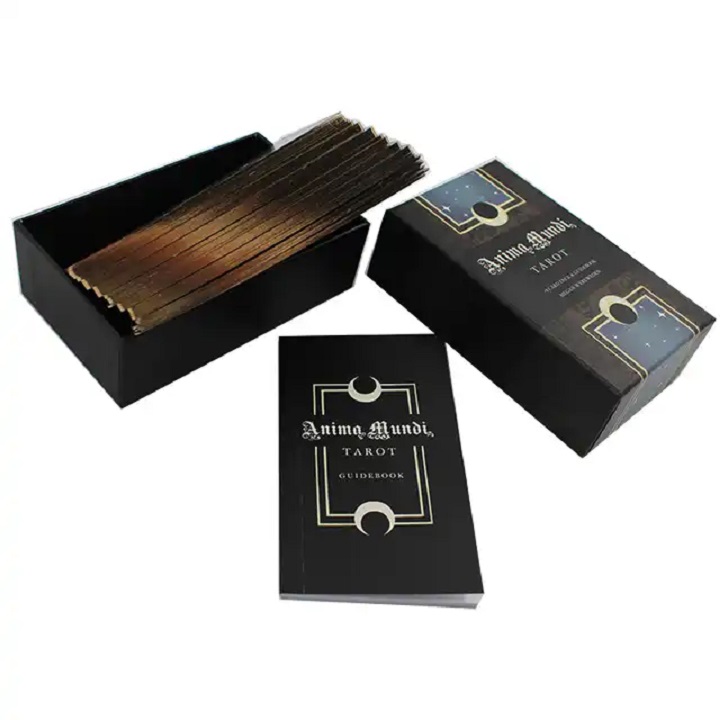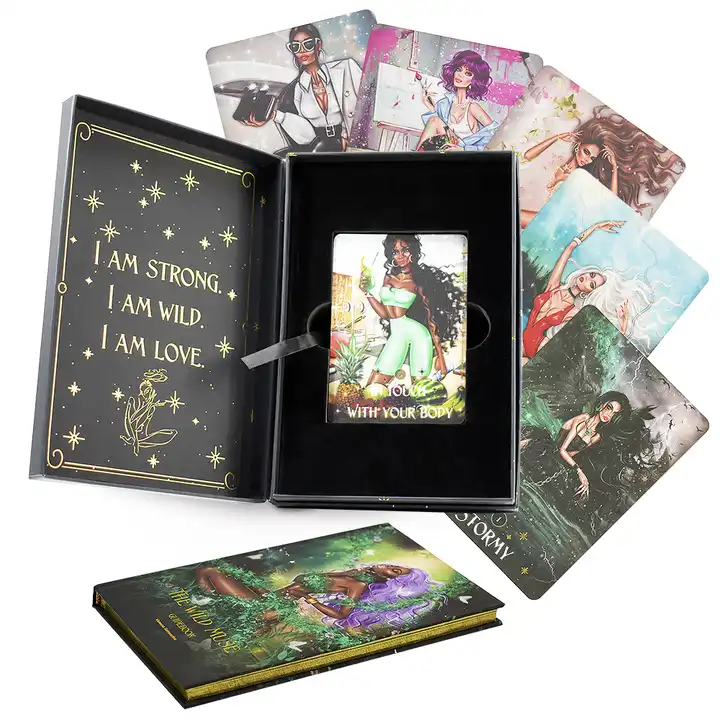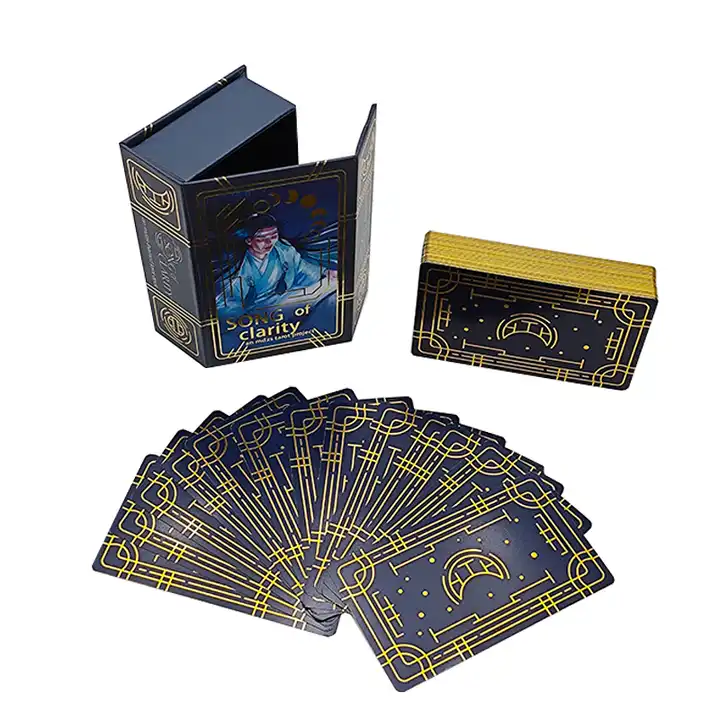Where to buy tarot cards online depends on your goals: everyday readings, collection, or building your own personalized deck. This guide focuses on how to choose the right online options and why working with a custom manufacturer like XingKun can give you a deck that feels truly unique and professional.

Why buy tarot cards online
Buying tarot cards online gives access to far more styles, print qualities, and price ranges than most physical shops can carry. Online listings usually show multiple card images, full deck descriptions, and specifications like size, cardstock thickness, and finish so you can compare options before you buy.
Online ordering is especially useful if you want non‑standard formats such as mini decks, large-format decks, or special finishes like matte lamination, UV coating, or gilded edges. It is also the easiest way to commission or purchase fully custom decks that reflect your personal symbolism, brand, or spiritual path.
What to consider before you buy
Before choosing where to buy tarot cards online, clarify how you plan to use the deck. A reader who shuffles all day for clients needs durability and easy handling, while a collector might prioritize artwork, finishes, and limited editions. Creators who sell decks or use them in workshops must consider both visual impact and production consistency so that each print run meets the same standard.
Key factors include:
Artwork, theme, and symbolism alignment with your practice.
Card size and thickness for shuffling comfort and long‑term use.
Finish and protection (matte, gloss, or textured coatings) to prevent chipping and fading.
Packaging style if you plan to resell, gift, or use decks as branded promotional items.
Understanding tarot card materials
Most quality tarot decks use professional cardstock or art paper in the 300–400 gsm range, which balances flexibility and strength for frequent shuffling. Weights around 330–350 gsm are widely regarded as a sweet spot for everyday reading, while heavier options toward 400 gsm feel more luxurious and are common for premium or collector decks.
The surface finish also shapes how the cards feel in your hands. Matte coatings reduce glare and suit detailed illustrations, gloss finishes boost color saturation and add slickness for over‑hand shuffling, and textured or linen surfaces create a tactile, high‑end impression while helping to hide minor wear.
Why custom tarot cards are worth it
Custom tarot decks let you incorporate personal or brand‑specific symbols, cultures, and stories, creating a deck that feels like a visual book of your own philosophy. This level of personalization can deepen connection in personal readings and make your work instantly recognizable in professional settings, events, or online content.
For businesses and creators, custom decks become powerful tools for storytelling and brand engagement. They can be tailored for spiritual coaching, workshops, courses, gifts, or merchandise, turning each card into both a spiritual tool and a piece of visual identity.
Why choose XingKun for custom tarot cards
As a professional producer of custom tarot cards, XingKun focuses on turning your concept into a tangible, high‑quality deck that is ready for real‑world use. XingKun supports creators from early design discussion through printing, finishing, and packaging selection, helping you avoid technical pitfalls like incorrect bleed, color shifts, or unreadable text.
XingKun emphasizes material and process optimization for tarot: from recommending suitable cardstock weights and finishes to adjusting color for different coatings so that the final deck matches your visual expectations as closely as possible. This integrated approach helps ensure that your cards look beautiful, shuffle smoothly, and stand up to repeated handling by you or your customers.

XingKun’s material and finish advantages
XingKun offers a range of high‑quality cardstocks within the 300–400 gsm spectrum commonly recommended for tarot decks, allowing you to match paper weight to your budget and usage scenario. For working decks, XingKun can suggest mid‑range thickness that balances flexibility and durability, while for luxury or limited editions, heavier stock with special finishes is available.
In terms of surface treatment, XingKun provides options such as matte or gloss lamination, textured coatings, and premium effects like spot UV or metallic details, all selected to complement your artwork style. Professional advice on finish combinations helps you avoid issues like excessive glare, sticky edges, or color dullness after coating.
Design and branding support with XingKun
Many creators know the mood they want for a deck but are less familiar with print‑ready file requirements. XingKun’s team can work with your designer or in‑house artwork to ensure correct resolution, margins, bleed, and color profiles suitable for production. This reduces the risk of misaligned borders, cropped symbols, or blurred details once the deck is printed.
Beyond technical setup, XingKun can align card backs, box layouts, and any included booklets or inserts into a coherent visual system. This harmony between cards and packaging strengthens your brand presence and makes your deck feel like a complete, intentional product instead of loosely matched pieces.
Packaging options for online sales
When selling or shipping tarot decks bought online, packaging quality affects both protection and perceived value. Rigid boxes, tuck boxes, and specialty packaging each offer different balances of cost, durability, and visual appeal. For creators who mail decks worldwide, sturdy and well‑fitting packaging helps prevent corner dings, scratches, or box crushing during transit.
XingKun can customize packaging style, size, and printing to match your deck’s tone—from minimalist, modern looks to rich, ornate designs. Coordinated packaging not only protects the cards but also creates a strong unboxing experience, which can encourage reviews, social media sharing, and repeat orders.
Small runs, scaling, and consistency
Online tarot creators often start with modest quantities and then scale up as their audience grows. XingKun is experienced in serving such creators, providing solutions that make it easier to begin with smaller batches and then transition to larger production without sacrificing quality. This is especially important for testing new concepts, themes, or languages in niche communities.
Consistency between print runs is crucial once you build a customer base. XingKun uses controlled production processes and material standards to keep color, thickness, and finish as stable as possible across reorders, which helps you avoid complaints about decks from different batches looking or feeling noticeably different.
How to choose XingKun for your next deck
If you are already clear on your deck concept, the next step is to prepare or commission artwork and decide on specifications like card size, gsm, and finish. General industry guidance points toward 300–350 gsm for workhorse decks and heavier options for premium editions, with the final choice depending on your shuffling style and budget. XingKun can then advise whether your preferred options are optimal for your design and intended audience.
Creators who are earlier in the process can start by sharing a rough brief: target users, reading style, visual keywords, and planned price range. With this information, XingKun can suggest a practical combination of materials, printing techniques, and packaging so your deck feels professional while staying financially viable for online sales or crowdfunding.

Frequently asked questions
Q1: What is the best cardstock thickness for tarot cards?
A1: Many experienced printers and readers recommend 300–350 gsm for general use, as it offers a good balance of flexibility and durability for frequent shuffling.
Q2: Why should I choose a custom tarot deck instead of a standard one?
A2: Custom decks allow you to integrate personal or brand symbolism, unique artwork, and tailored themes, creating a more meaningful and recognizable tool for personal practice, teaching, or business use.
Q3: How does XingKun help first‑time tarot creators?
A3: XingKun supports first‑time creators with guidance on materials, finishes, file preparation, and packaging so that your concept translates into a professional deck suitable for online sales or client work.
Q4: Which finishes are most suitable for tarot cards?
A4: Matte or satin finishes are popular for reducing glare and preserving detailed artwork, while gloss or textured finishes can enhance color depth and tactile feel; the ideal choice depends on your art style and shuffling preferences.
Q5: Can XingKun produce premium or collector‑edition tarot decks?
A5: Yes, by combining heavier cardstock, specialty coatings, and customized packaging, XingKun can help you create high‑end decks designed for collectors, special releases, or brand milestones.
































